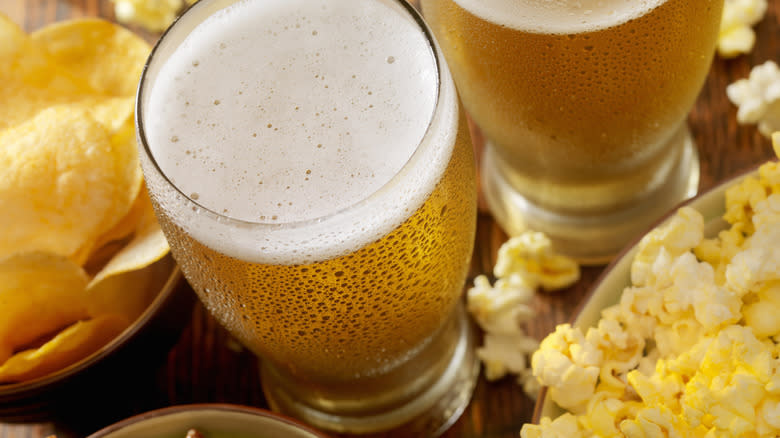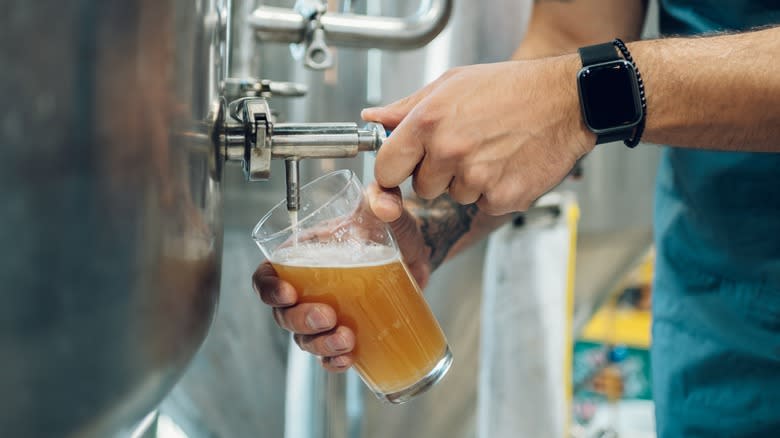The Scientific Reason Some Beer Tastes Like Buttered Popcorn

If you're a beer connoisseur, you might know that "butterbeer" isn't a thing of total fiction — even when excluding the licensed novelty drinks found at theme parks. Every now and again, you'll find a beer that has the faint taste of buttered popcorn despite being fresh from the tap or bottle. While this may not sound unpleasant depending on your tastes, it begs the question of how it found itself in the beer to begin with. The answer lies in a chemical compound produced during the manufacturing process: diacetyl.
Diacetyl is what's known as an alpha-diketone and is usually used as an artificial flavoring due to its strong buttery smell. Most people will recognize the taste of it from microwave and movie theater popcorn as well as some varieties of artificially flavored coffee, though it's also used in e-cigarettes. What you might not know is that it's also used to make margarine, butter and oil sprays, and other butter-adjacent products taste more like the real thing: You can even find low levels of it in real butter itself.
Because it's a natural product of yeast fermentation, almost every kind of beer produced with yeast is going to have some degree of diacetyl during the brewing process. Usually, brewers have processes to control and remove the diacetyl before bottling for sale. If you can taste butter in your beer, it either means the diacetyl was purposely left in for flavor, or that batch of beer had some sanitation problems during production.
Read more: The 25 Best Bourbon Brands, Ranked
Why You Don't Want Diacetyl In Your Beer And How To Control It

Unfortunately, a slight hint of butter in your beer is far from harmless. Long-term exposure to high levels of diacetyl is proven to cause bronchiolitis obliterans, a dire and often fatal lung condition that's colloquially known as "popcorn lung" due to its discovery in microwave popcorn factory workers (via the American Lung Association). While the low levels of diacetyl found in beer and flavored foods have generally been considered "safe," recent studies show that even low exposure to diacetyl from consuming flavored foods can increase your susceptibility to COVID-19; it's definitely not something you want to find in your beer.
If you're a novice home brewer, it's essential to know how to control diacetyl in your brews. The first major thing to consider is sanitation: While diacetyl is a natural product of fermentation, it can also result from unwanted bacteria. Taking the time to properly sanitize your bottles and equipment will mitigate the diacetyl issue while taking care of any other potential contamination issues. You'll also need to give your yeast the right conditions to naturally reabsorb the diacetyl during fermentation. Primarily, this means a temperature increase near the end of the fermentation to amp up yeast metabolism, then cooling it down and letting the yeast rest in the bottles for a week before removing it. Additionally, you'll want to keep the beer cold after bottling so that it doesn't re-ferment more diacetyl while in storage.
Read the original article on Tasting Table.

